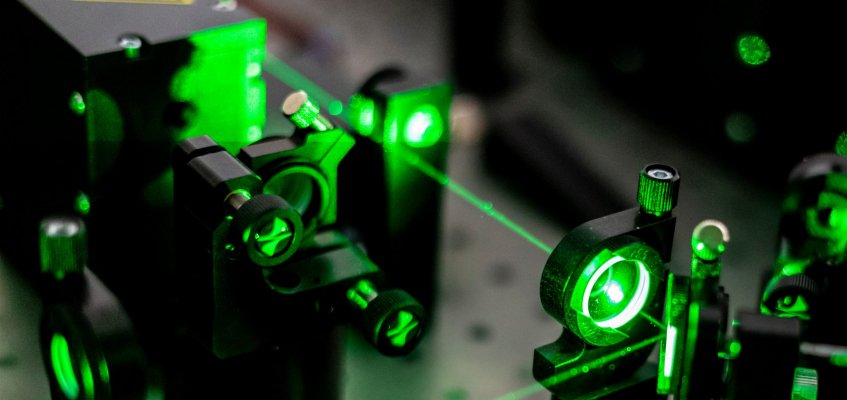Signal processing algorithms improved turbulence in free-space optic tests
New signal-processing algorithms have been shown to help mitigate the impact of turbulence in free-space optical experiments, potentially bringing ‘free space’ internet a step closer to reality.
The team of researchers, from Aston and Glasgow universities, used commercially available photonic lanterns, a commercial transponder, and a spatial light modulator to emulate turbulence. By applying a successive interference cancellation digital signal processing algorithm, they achieved record results.
The findings are published in the IEEE Journal of Lightwave Technology.
Free space optical technology wirelessly transmits data as light through the air around us – called ‘free space’ – for use in telecoms or computer networking. Because free space optical communication doesn’t require the expensive laying of fibre cables, it’s seen as an exciting development in bringing communications to places where there is limited existing infrastructure.
But because data is sent as pulses of light, weather conditions can cause problems. A bright sunny day or thick fog can diffract or scintillate the beam of light, creating turbulence which causes data to be lost.
The researchers simultaneously transmitted multiple data signals using different spatially shaped beams of light using a so-called photonic lantern. Turbulence changes the shape of the beams, often losing the signal if only a single simple shape is transmitted and detected, but by detecting light with these shapes using a second lantern, more of the light is collected at the receiver, and the original data can be unscrambled. This can greatly reduce the impact of the atmosphere on the quality of the data received, in a technique known as Multiple-input multiple-output (MIMO) digital signal processing.
Professor Andrew Ellis at Aston University said: “Using a single beam, when a single beam was transmitted, turbulence similar to a hot sunny day destroyed the signal 50% of the time. By transmitting multiple beams of different shapes through the same telescopes and detecting the different shapes, not only did we increase the availability to more than 99%, we increased the capacity to more than 500 Gbit/s, or more than 500 ultra-fast Pure-Fibre broadband links. ”
A project investigating the real-world applications of FSO technology is presently underway in South Africa, where researchers from Aston and Glasgow University are working with the University of the Witwatersrand in Johannesburg to attempt to bring internet access to communities living in informal settlements and schools in underprivileged areas.
The Fibre Before the Fibre Project, aims to provide the internet performance of a Pure-Fibre connection without the need to install cables. It uses a free space optical communication system that can link to remote sites using a wireless optical line of site signal to link to nearby fibre sources in more affluent suburbs.
Professor Ellis said: “Our role in the project is to look at the impact and educational benefit free space optics will have for the school children who will finally be able to access the internet.”

